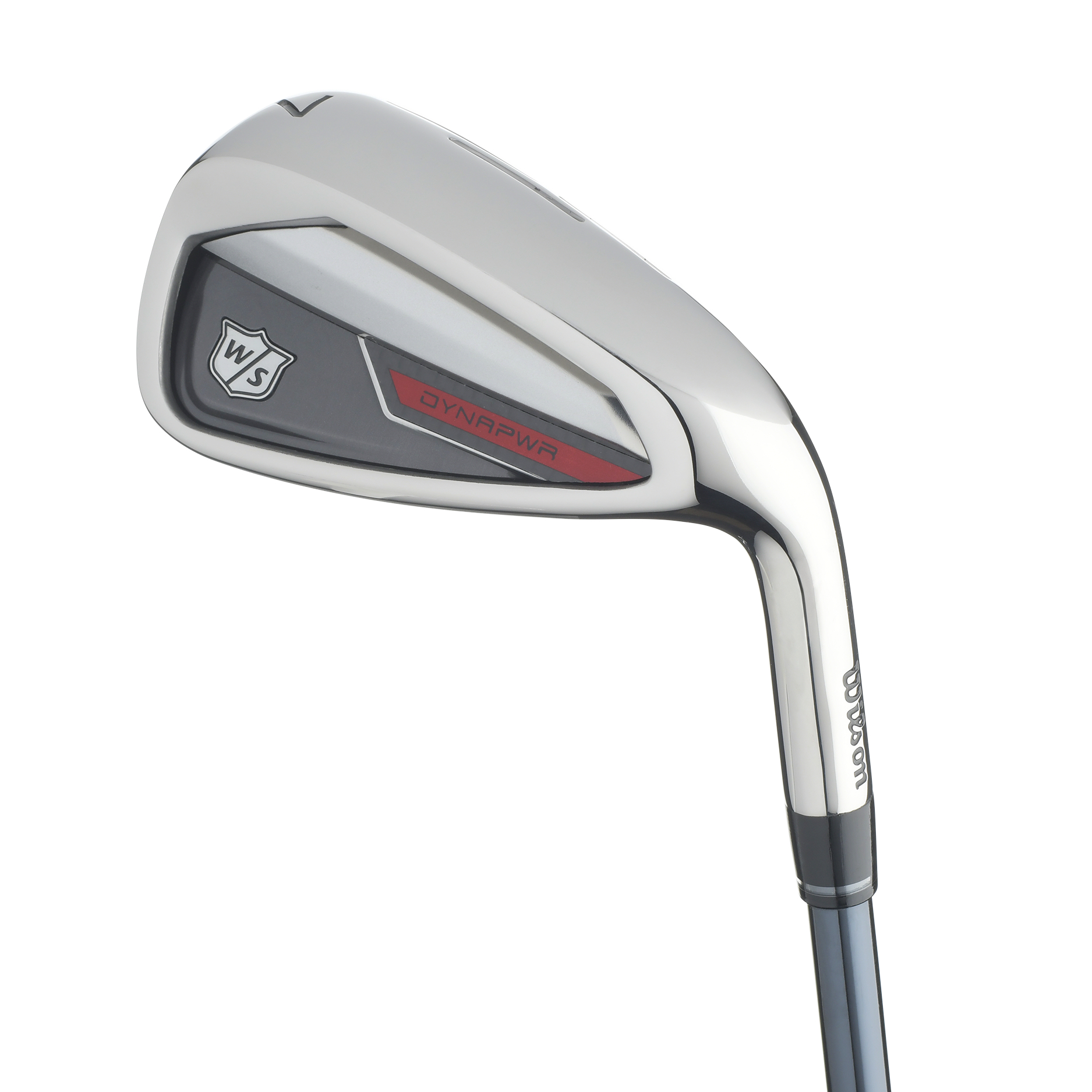New irons
Wilson Dynapower irons: What you need to know

WHAT YOU NEED TO KNOW: Golf-club enthuiasts will instantly recognize the Dynapower moniker (yes, that’s the name even though it says Dynapwr on the club). After all, Dynapower irons date back to 1956, and it was a Dynapower 6-iron that Alan Shepard hit two shots with on the surface of the moon. The modern version of the iron may or may not ever be hit from the lunar surface, but the basic premise of the club—assisting shots struck out on the toe—remains the same.
PRICE/AVAILABILITY: $114 per club in steel; $128 per club in graphite. Available for pre-order on Feb. 22.

Admitting you have a problem is the first step toward fixing it, and middle-handicappers tend to hit iron shots on the toe of the club 85 percent of the time (according to data from Arccos). Wilson set out to mitigate that issue by changing the way it uses its “power holes” on the sole of the club. The holes are filled with a polymer and are designed to enhance ball speed. The design team decided the largest of the three holes should be moved to the toe area. Problem solved.
3 COOL THINGS
1. A face created to match where you hit it. Tour pros hit the center of the face often. The rest of us, not so much. But those with a Handicap index of 10 and higher do have a common tendency. Using data from Arccos, Wilson discovered golfers in that handicap group have iron impacts that find the toe side of face center 85 percent of the time. And on those shots, players came up short of the green 40 percent of the time.
To combat that, the long irons in the Dynapower Family (4-through 8-iron), utilize a two-piece construction where the face is welded to the main body of the iron head. Although that’s not a new idea, it comes with a twist. The welding is done around the topline and the upper part of the toe area. That means a larger area of the face is unsupported, which creates more ball speed in areas that are typically rigid.
“This design is all about faster ball speeds out from the center of face towards the toe,” said Jon Pergande, global manager of innovation for Wilson Golf. “Getting more speed in that area of an iron is a big help to the everyday golfer.”
The face is made from 17-4 stainless steel, like the body of the iron, but is created from a forged/stamped process. This manufacturing approach allows for a stronger and thinner face, while maintaining high strength and durability. The iron also has changing thicknesses on 27 points on the face, ranging from 2 to 2.5 millimeters.

2. A new A.I.-driven powerhole design. Wilson has employed “powerholes” in its irons for some time now to enhance face flex and improve ball speed. However the company continually re-evaluates the design of the polymer-filled spaces.
Wilson undertook an optimization process that accounted for 17 sizing variables. Those included the number of slots in two rows, the length of the slots in two rows, the width of the slots in two rows, the spacing of slots within the row and spacing between the rows. Two “biasing” parameters were introduced to “stretch” the slots along the length direction. This allowed for the creation of different sized slots in the same row.
“Our R&D team worked with the information we got from the artificial-intelligence process to arrive at the final design of the holes,” Pergande said. “The final version was three holes in two rows, with only one hole in the center in the back row and two holes in front. The largest of the three holes was stretched more out to the toe and closer to the face where it works with where the face is thinnest to help with the ball speed gain we were looking for in that area.”

To get the full picture here you need to turn the club over to see the “powerholes.” You’ve seen these from Wilson before but now these flexible sections appear only on the 4- through 6-irons—or the clubs where most players are looking for a little extra punch. Still, an iron designed for distance isn’t much good if you’re yelling “Full flaps!” when it hits the green. To address that, Wilson lowered the CG to increase the launch angle and foster stopping power. Finally, the soft, forged carbon steel delivers the kind of responsive feel worthy of the Dynapower name.
3. Shape matters. Knowing that one of the first aspects of a club golfers notice is the top-down view of the clubhead at address, Wilson set out to make a game-improvement iron that could appeal to a wider audience.
“The shaping was designed to have some crossover appeal so slightly lower handicaps would take a look,” Pergande said. “We included a chamfer on the topline to slim the look while maintaining all the playing benefits of the club.”
The hosel also is longer, but thinner. That not only helps the look but keeps the CG out to the center-toe area while also making it easier to bend for custom builds.